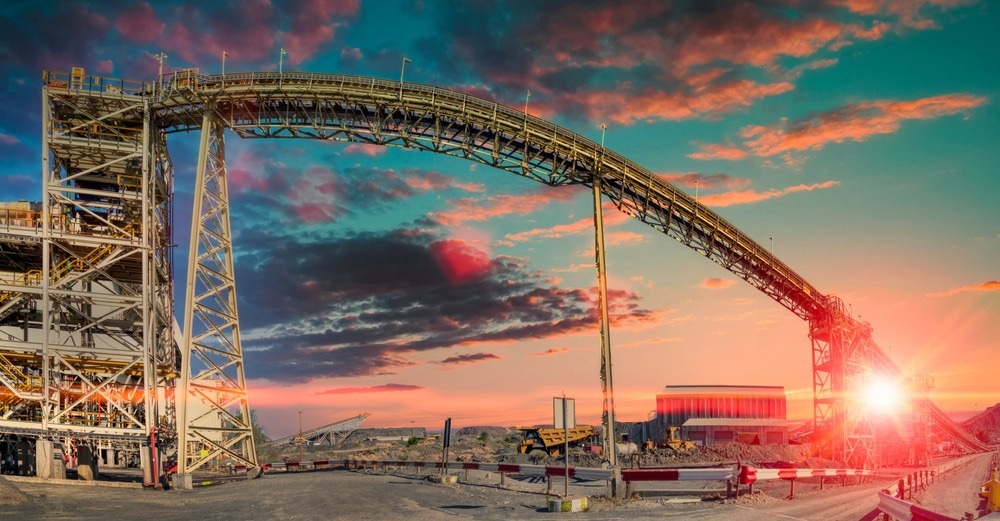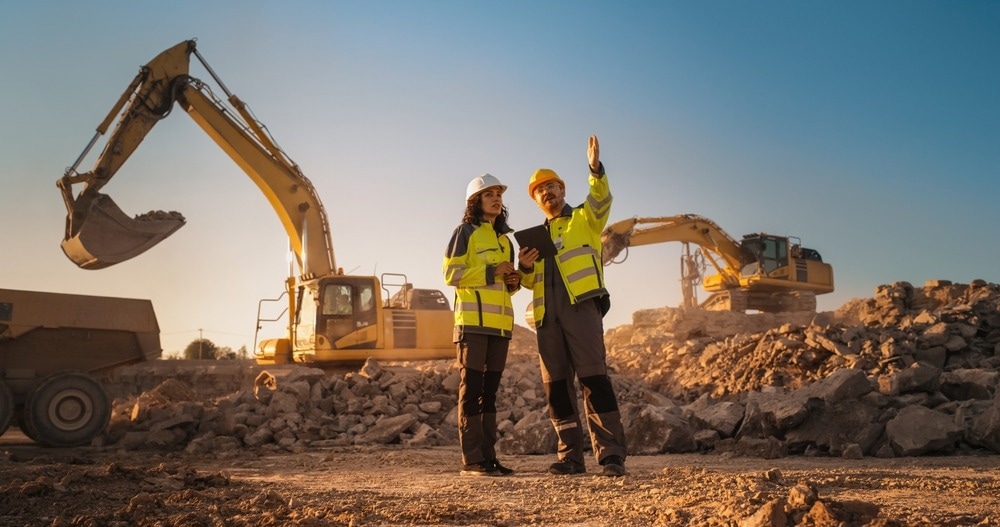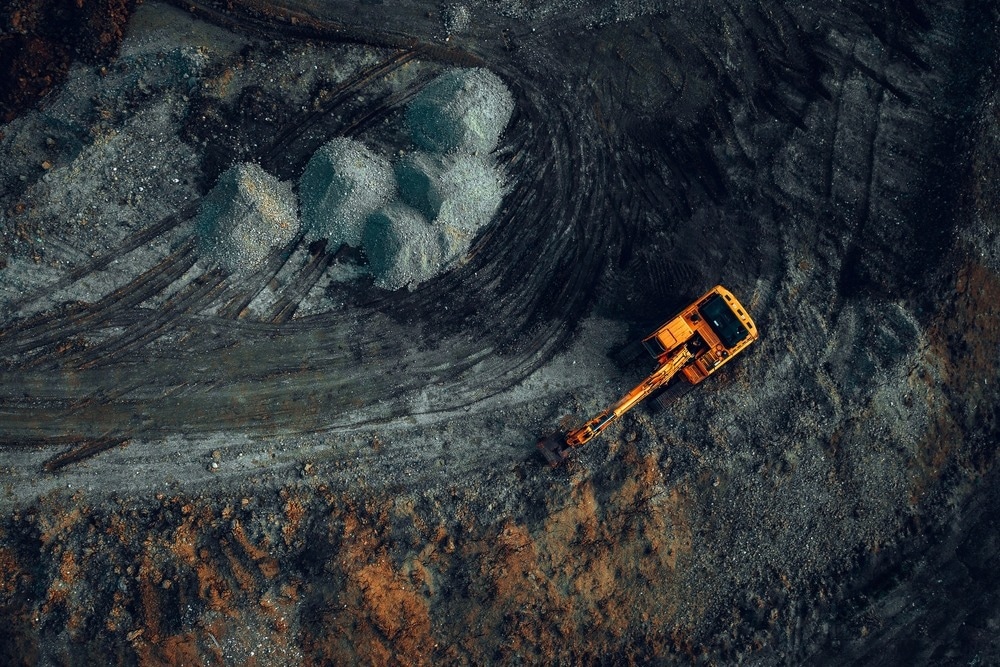The future of mining will likely be defined by technological innovation, a shift towards more sustainable practices, and the exploration of new frontiers in resource extraction. These changes aim to meet the growing demand for minerals while minimizing the environmental and social impacts of mining.
In this interview, Tom Kruczynski, the Business Development Manager at Plextek, talks to AZoMining about navigating the future of mining.
What are some of the biggest safety concerns as mines become more automated, especially with the interaction between autonomous vehicles and human workers?
Along with increased efficiency and productivity, one of the key benefits of autonomous mining is safety. In a fully automated mine, with operators and vehicles completely separated, you are effectively moving your workers out of harm's way.

Image Credit: Lucian Coman/Shutterstock.com
However, during what could be a lengthy transition to that point, where the mine site is likely to be occupied by a combination of autonomous vehicles and human-operated vehicles, there is a real and tangible risk to safety that is delaying the adoption of autonomy in some cases. Collision Avoidance Systems can improve situational awareness and help prevent accidents between all vehicles, humans, infrastructure, and the environment, offering a comprehensive approach to this critical safety challenge.
Beyond navigation, how can technology give machinery "vision" contributing to improving safety and operational efficiency in mines, particularly regarding collision avoidance and environmental monitoring?
Sensors can give vehicles awareness or "vision" of their surroundings, and whether the sensor is LiDAR, radar, camera, or ultrasonic, the aim is always the same. This stream of information, or data, about the surroundings can be used to alert an operator (or autonomous vehicle) about an oncoming obstacle or potential collision or to provide specific information about the environment through classification, such as what other vehicles are in the field of view and at what speed they are traveling.

Image Credit: Gordodenkoff/Shutterstock.com
These sensors can be installed independently or more often as a suite, where they are installed in combination to maximise advantages and mitigate individual weaknesses. An example of this would be using mmWave radar technology alongside LiDAR or a camera-based system to cope with low visibility scenarios. Choosing the right sensor solution can help you prevent accidents and collisions and thus significantly reduce or ideally prevent injuries and fatalities, which are unfortunately still more common than we'd all like in the mining world.
You mention that radar technology can overcome the visibility challenges that other systems, like LiDAR, can struggle with. Could you explain why mmWave radar is better suited for the harsh conditions of a modern mine?
The primary weakness of sensor systems that use the visible (or near-infrared) spectrum, such as LiDAR and camera-based systems, is the ease with which they can be effectively rendered blind by particulates in the field of view. The mining environment offers a significant challenge to any vision system, whether it is the ubiquitous dust, vehicle exhaust fumes, or even adverse weather conditions.
Radar, however, operating as it does in the radio spectrum, is far more resilient to these types of occlusions. With mmWave radar in particular, high-accuracy distance measurements over a substantial detection range are now possible at a very competitive price point.
What specific factors in a mining context make custom communication systems necessary?
The proliferation of sensors, automated equipment, and vehicles, as well as safety-critical telecommunications and video surveillance, means that communications systems in the mining environment need to manage a huge volume of data and crucially must be built to withstand the elevated temperatures, weather conditions, vibrations, and extremely dusty environments of the mine. The wide range of data types, bandwidths, transmission distances, and use cases means that an off-the-shelf solution is not always suitable, and when the successful delivery of this data can be the difference between life and death, there is no room to compromise.
In what ways does a deep understanding of radio frequency (RF) system design allow you to enhance communication performance in the difficult conditions found in mines, such as improving range or dealing with obstructions?
The key to the design of a successful wireless communications system is having a good grasp on the basics of radio waves and, crucially, understanding the importance of antennas – the ears, eyes, and mouth of communications systems – and propagation – how the radio waves are reflected, blocked or absorbed by parts of the environment. This needs to be coupled with a system-level approach, where all system elements are considered, and the various relationships and trade-offs between performance, power, size, and cost are balanced to meet the specific requirements under consideration.
Plextek's proven track record in developing custom communications systems means that we understand these trade-offs very well and can maximize performance in the mining environment. This can be done by adjusting the frequency to improve resilience to obstructions, using higher-gain antennas for increased range, or utilizing repeater nodes to ensure access to hard-to-reach end nodes or sensors.

Image Credit: sdf_qwe/Shutterstock.com
As the era of the smart mine evolves, what advancements or emerging technologies do you see becoming crucial in the next few years, particularly in enhancing both safety and operational efficiency?
The ongoing digital transformation of mining, while hugely exciting for the industry due to the promises of increased productivity and improved safety, also poses a challenge to the wider infrastructure of the mine. It is going to be critical for mine operators and technology providers to consider how to transmit and manage the increased volume of data and ensure the communications on which the mine and the safety of the personnel depend are reliable and secure.
Couple this data with the transformational power and opportunity of Artificial Intelligence (AI), and you can see how the mining industry is about to undergo a paradigm shift. The applications of AI in the mining industry are endless, whether it is predictive maintenance – using sensor data from equipment to detect when maintenance is required before a failure occurs – or optimizing key drilling and haulage operations. There is a lot to be excited about and a lot of work to do to ensure the adoption of this technology is as seamless – and safe – as possible.
Where can readers find more information?
https://www.plextek.com/markets/industrial/mining-construction/
Contact us to find out how Plextek's technology is enhancing the safety, efficiency, and productivity of mining and construction through our advanced custom engineering solutions – and how we can give you the edge.
About Tom Kruczynski
Tom Kruczynski is a Business Development Manager at Plextek, leading our growth within the mining and construction industry. With a degree in electronics, Tom has spent his career both operating and selling consulting and engineering services in the wider industrial sectors, with a focus on IoT and sensing technologies.
About Plextek
Engineering innovative, sustainable solutions for over 30 years, Plextek works with industry leaders to tackle your most complex challenges in RF & sensing. We understand the critical role of technology in the mining & construction industries. Specialized in low SWaP (Size, Weight, and Power) communication systems, custom-built radar, and sensing technology, we are committed to enhancing the safety, efficiency, and productivity of mining and construction operations.
Our expertise spans a long history of providing robust technologies for extreme applications and solving challenges in harsh and unforgiving environments. Partnering with Plextek means engaging with a technology consultancy that brings decades of advanced engineering experience to your project.
www.plextek.com

Disclaimer: The views expressed here are those of the interviewee and do not necessarily represent the views of AZoM.com Limited (T/A) AZoNetwork, the owner and operator of this website. This disclaimer forms part of the Terms and Conditions of use of this website.